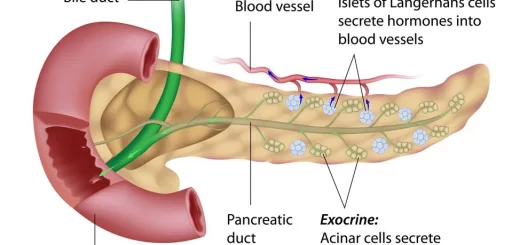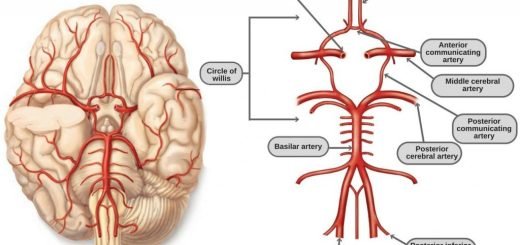Lower limb bones, anatomy, structure, features and muscles
The lower limb or lower extremity includes the foot, thigh, and hip or gluteal region. The human leg refers only to the section of the lower limb extending from the knee to the ankle, also known as the crus or, especially in non-technical use, the shank. Female legs include greater hip anteversion & tibiofemoral angles, but shorter femur and tibial lengths than those in males.
Lower limb
The human lower leg is the part of the lower limb that lies between the knee and the ankle in human anatomy. The term lower limb or “lower extremity” is used to describe all of the legs. The leg from the knee to the ankle is called the crus, The calf is the back portion, and the tibia or shinbone together with the smaller fibula make up the front of the lower leg.
The lower limbs include the gluteal region, the thigh, the knee, the leg, the ankle, and the foot. The thigh and the leg are compartmentalized, each compartment having its own muscles that perform group functions and its own distinct nerve and blood supply.
Hip (pelvic) bone
Features of the pelvic bone
Features of the Ilium:
- Iliac crest: the thick, upper margin.
- Iliac fossa: anterior smooth surface
- The anterior superior/ Anterior inferior iliac spine: sites for muscle attachments
- The posterior superior/ posterior inferior iliac spine: sites for muscle attachments
- Greater sciatic notch
- The auricular surface for articulation with the sacrum to form the sacroiliac joint.
Features of the Ishium:
- Ischial tuberosity: site for attachment of hamstring muscles.
- Ischial spine: site for ligament attachment, measurement site for pelvic opening.
- The obturator foramen: the only ”hole” or opening for nerves/blood vessels.
- Ischial ramus: point of connection with inferior ramus of the pubis.
Features of the pubis:
- Superior/inferior ramus.
- Pubic crest and tubercle: site for attachment for abdominal muscles.
- The pubic symphysis: articulation point that connects the two pubic bones together.
- The pubic arch helps to determine the male versus female pelvis.
Articulations of the hip bone:
- Above and behind: with the sacrum by means of the sacroiliac joint.
- Below and in front with the other hip bone by means of the symphysis pubis.
- Through the acetabulum with the head of the femur to form the hip joint.
How to know if a hip bone is right or left?
- The iliac crest lies ………. above.
- The acetabulum lies ………. Laterally.
- The ischial tuberosity lies ………. below and behind.
The skeleton of the thigh
Femur
Single bone of the thigh is the largest, longest, and strongest bone in the body.
Features of the femur
It is formed of the upper end, shaft, and lower end. The upper end of the femur consists of the head, neck, greater trochanter, and lesser trochanter.
- The head articulates with the acetabulum of the hip bone. It has a small, pit shaped depression called the fovea capitis where the ligamentum teres is attached. Ligamentum teres helps to secure the head into the acetabulum. This ligament may transmit some small blood vessels to the head of the femur which pass through foramina in the pit of the head.
- The neck is 5 cm long and connects the head with the shaft. It forms an angle of about 110 – 120 with the axis of the shaft; this angle is smaller i.e. (more acute) in the female (who has a winder pelvis) than in the male. The angle is normally about 160 in children because the pelvis is narrow and so the neck and the shaft of the femur are almost in line with each other.
- The greater trochanter: The top of the greater trochanter lies at the level of the pubic crest. Its medial surface has a deep depression called the trochanteric fossa.
- The lesser trochanter: is a small pyramidal projection.
Shaft
The shaft of the femur is smooth and rounded on its anterior surface but posteriorly has a ridge, the linea aspera, to which are attached muscle and intermuscular septa. The margins of the linea aspera diverge above & below. The medial margin continues below as the medial supracondylar ridge to the adductor tubercle above the medial condyle. The lateral margin becomes continues below the lateral supracondylar ridge.
On the posterior surface of the shaft below the greater trochanter is the gluteal tuberosity for the attachment of the gluteus maximus muscle. The shaft becomes broader toward its distal end and forms a flat, triangular area on its posterior surface called the popliteal surface.
The lower end of the femur
It has the following features:
- Medial and lateral condyles: for articulation with the tibia.
- Medial and lateral epicondyles: the only part of the femur that can be felt at the knee.
- Intercondylar fossa or notch: for the attachment of the cruciate ligaments of the knee.
- Patellar surface: the smooth surface above the condyles on the anterior side that articulates with the patella.
- Popliteal surface: surface above the condyles on the posterior surface.
How to know if a femur is left or right?
- The head lies ………. above and medially.
- The shaft is convex ………. anteriorly.
- Lesser trochanter ………. posteriorly.
Joints of the femur
- The head articulates with the acetabulum …. to form the hip joint.
- The two femoral condyles articulate with the 2 tibial condyles … in the knee joint.
- The anterior (patellar articular) surface of its lower end articulates with the upper 2/3 of the posterior surface of the patella.
Patella
The patella is the triangular-shaped sesamoid bone encased in the patellar tendon, the patellar tendon attaches the quadriceps femoris muscle to the tibia. It has two surfaces: the rounded, convex anterior surface, and the smooth, articular posterior surface.
Elbow joint function, structure, movements, ligaments & Small Joints of the Hand
Types of joints of upper limb, Ligaments & movements of the shoulder joint
Thigh function, muscles, structure & superficial fascia of the thigh



